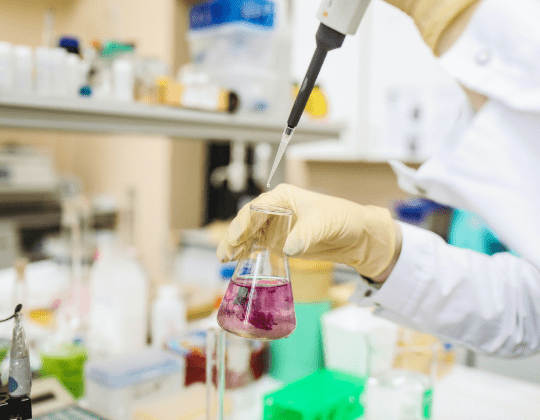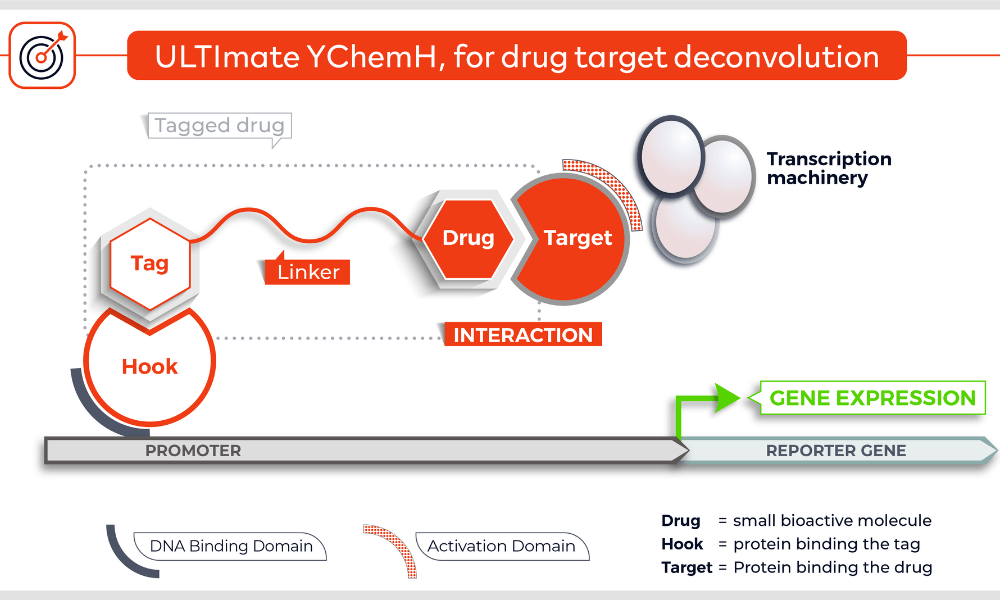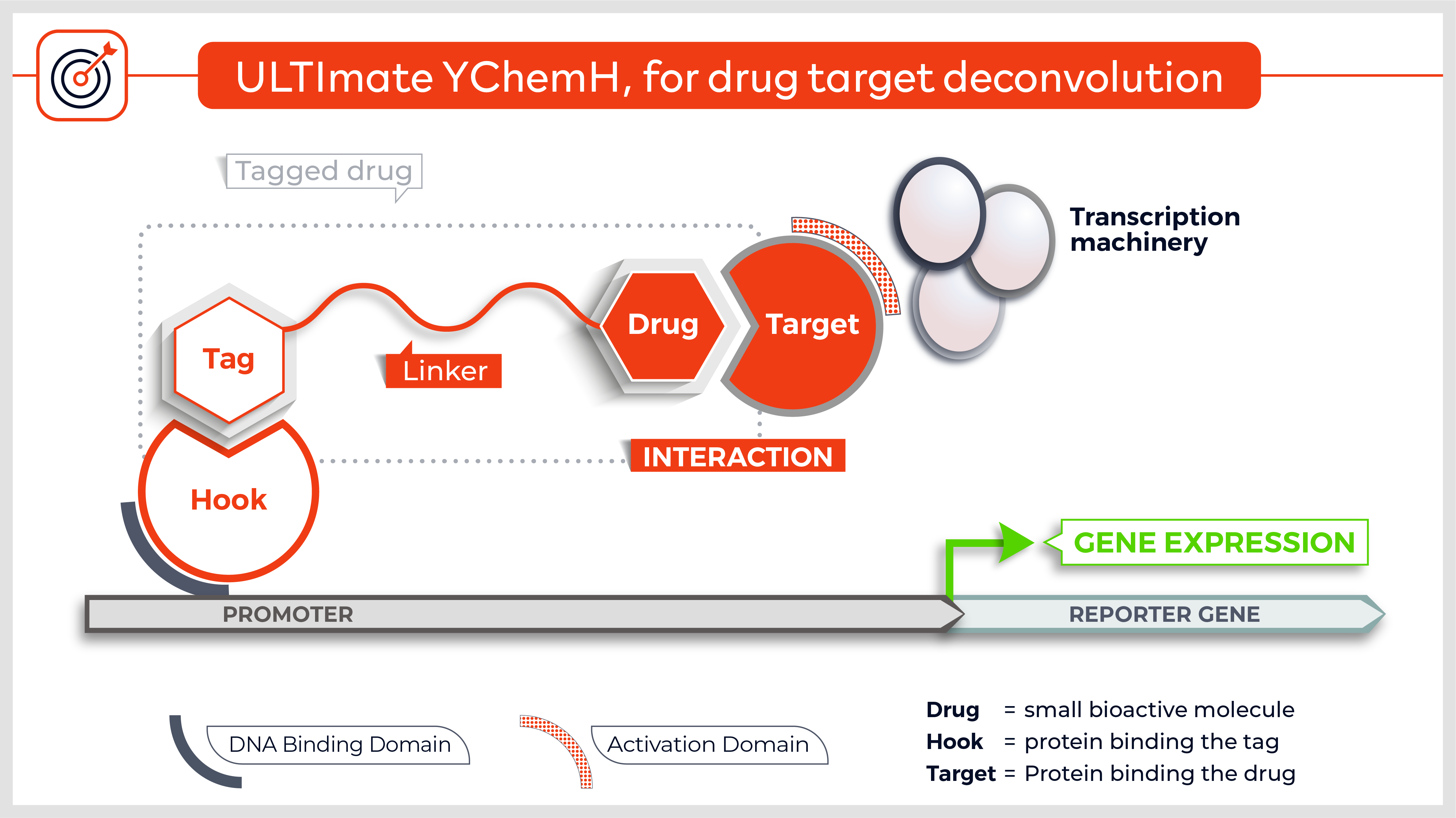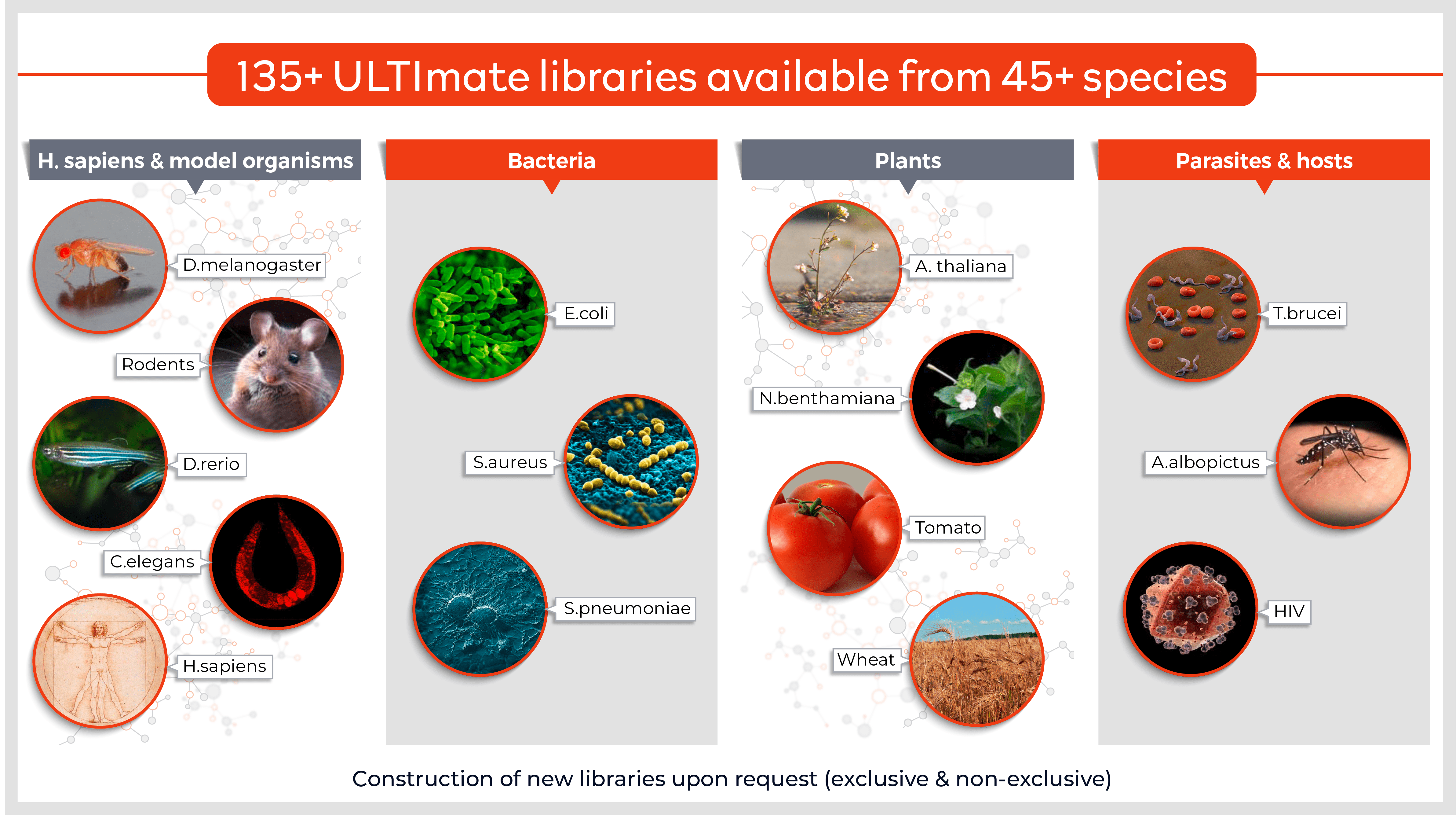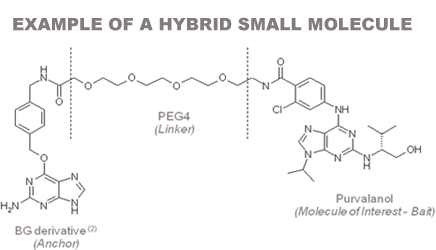The Yeast Three-Hybrid relies on the reconstitution of a functional transcription factor (TF) followed by the expression of a reporter gene in genetically modified yeast cells. Upon a drug–target protein interaction, the DNA Binding Domain (DBD) of the TF is brought in close proximity to its Activation Domain (AD). This activates the transcription of the HIS3 reporter gene, allowing yeast cells to grow on selective medium lacking histidine. The DNA of positive clones are sequenced to reveal the interacting partners.
The YChemH technology is a three-component system
- A hook protein fused with a DBD
- A target protein library fragment fused to the transcriptional AD
- A small molecule tagged with a ligand that binds to the hook protein






